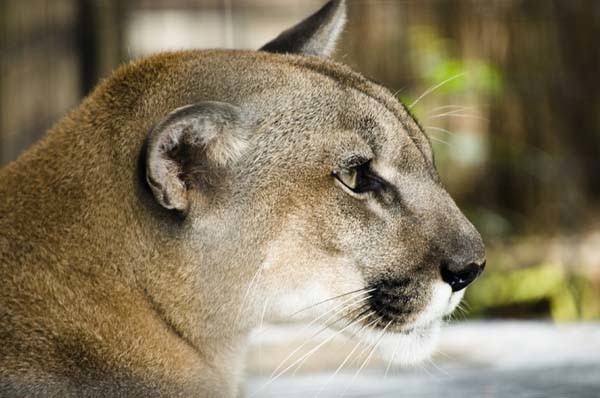Do Mountain Lions and Domestic Cats Scratch Objects for the Same Reasons?
Everything about mountain lions fascinates me, and I hope that by using a trail camera I can capture videos of at least one of them engaging in natural behavior. Because I'm a cat behaviorist, I’m especially drawn to the behavioral similarities and differences between mountain lions and domestic cats. With a little luck and patience, our trail camera may catch a mountain lion scratching.
My boy friend George and I are fortunate to live on the San Francisco Peninsula near an area rich with a diversity of wild life. About 3 minutes from home, we found a good spot for the trail camera—on the bank of a creek near a couple of trees that appear to have long claw marks high up on them. We focused the camera down a game trail that leads to a pooled area in the creek. This seemed to be a good location for capturing images of four-footed locals quenching their thirst. I think we chose a good spot—check out the video of this lovely doe and her spotted fawn.
One big difference between mountain lions and domestic cats is that cougars are apex predators and cats aren’t. Although in other areas they have bears and packs of wolves to contend with, in the San Francisco Bay Area, mountain lions are at the top of the food chain—nothing eats them. Here, their primary enemies are people. Domestic cats are predator as well as prey. Although they’re skilled hunters, larger predators view them as potential meals.
Cats use their paws for scent-marking
Except in specific circumstances, both mountain lions and domestic cats are solitary hunters—they hunt alone, and, with the exception of family groups, they eat alone. Pumas who are mating and siblings newly on their own, also will eat and hunt together. Both species are also territorial, with intact males being much more so than females. Animals who are territorial and generally avoid each other need ways to advertise for mates, indicate status and define their territories without having potentially fatal encounters with each other. In addition to vocalizing, they achieve this is by scent-marking.
There isn't a lot of information available about mountain lion behavior. We do know that like domestic cats, they have scent glands on different areas of their bodies, including the bottoms of their paws. Both claw objects with their front paws, leaving marks. Cougars will also rake the ground with their back paws and occasionally with one front paw.
Mountain lions stretch and reach up high to scratch trees, and they also scratch logs—leaving deep claw marks. Small, domestic cats do an abridged version, scratching on posts, horizontal surfaces, furniture, trees and other objects. When domestic felines and their feral cousins scratch, scent is left behind—signposts rich with information about the scratchers.
The scent deposited by domestics along with the physical scores communicates vital information about them. Among other things, it can advertise that a female is looking for boyfriends, be an indicator of social status, and serve as a "no trespassing" sign. Additionally, cats claw objects when they feel stressed and conflicted, and it helps maintain claws—feline pedicures at their best. Although we know why domestic felines scratch, we don’t know why mountain lions scratch trees and logs. We do know why they rake the ground, though.
Mountain lions mark through scraping
One of the ways mountain lions scent-mark is by scraping dirt into small mounds with their back paws. This behavior is exhibited mostly by males in cleared areas, on trails and next to partially consumed meals. Often they deposit feces inside the raked area or on top of the small pile of earth. One study found that the frequency and locations for scraping depend on how many other mountain lions are in the area.
After two weeks, our trail camera finally caught a video of a cat clawing a tree—not quite who we were expecting. At least we know there are felines in the area.
I have so much to learn about mountain lion behavior. I’ve only started scraping the surface—thank you Felidae Conservation Fund and the Bay Area Puma Project for guidance and fact-checking.
For lively discussions about cats and behavior, please check out The Cat Coach on Facebook.



Fascinating Marilyn, keep me updated...
I will. I intend to write more about their behaviors--what I learn along with the questions and unknowns. BTW, thank you for your interest and your comment.